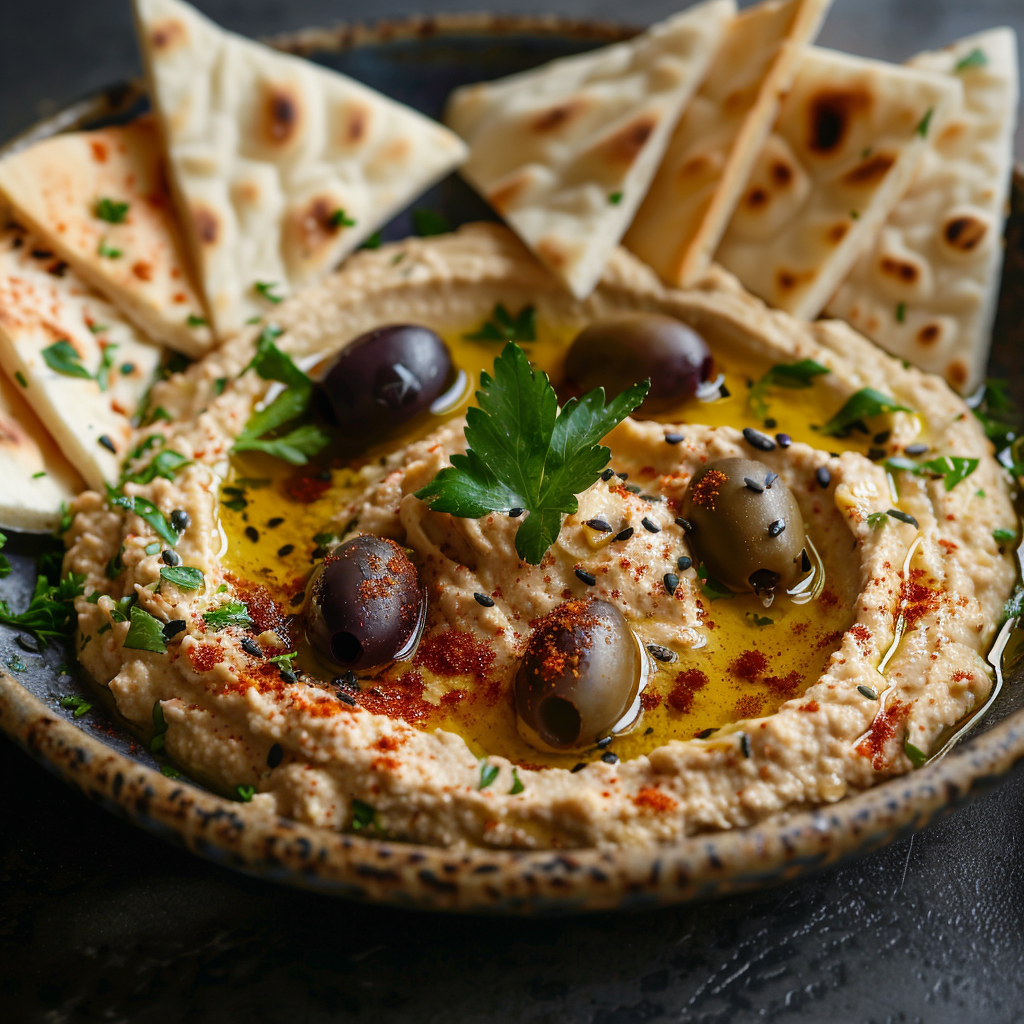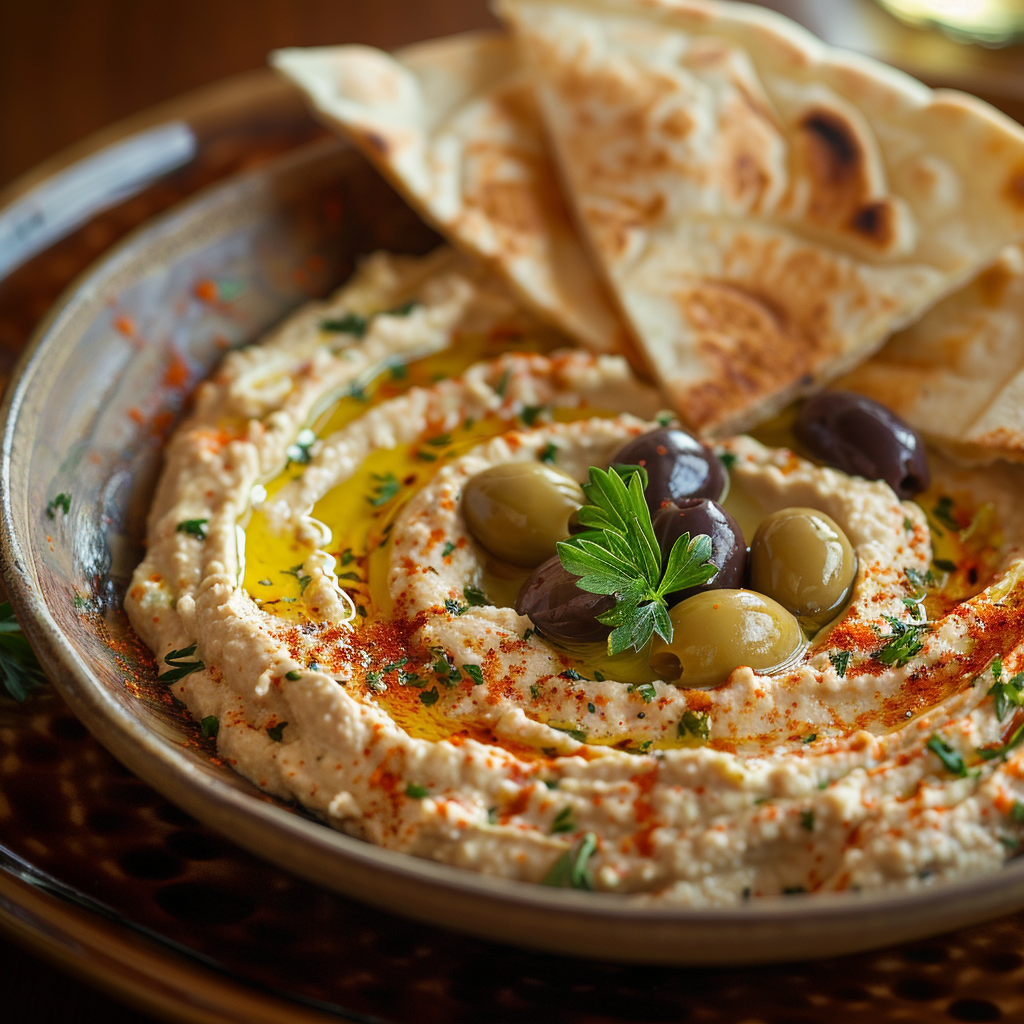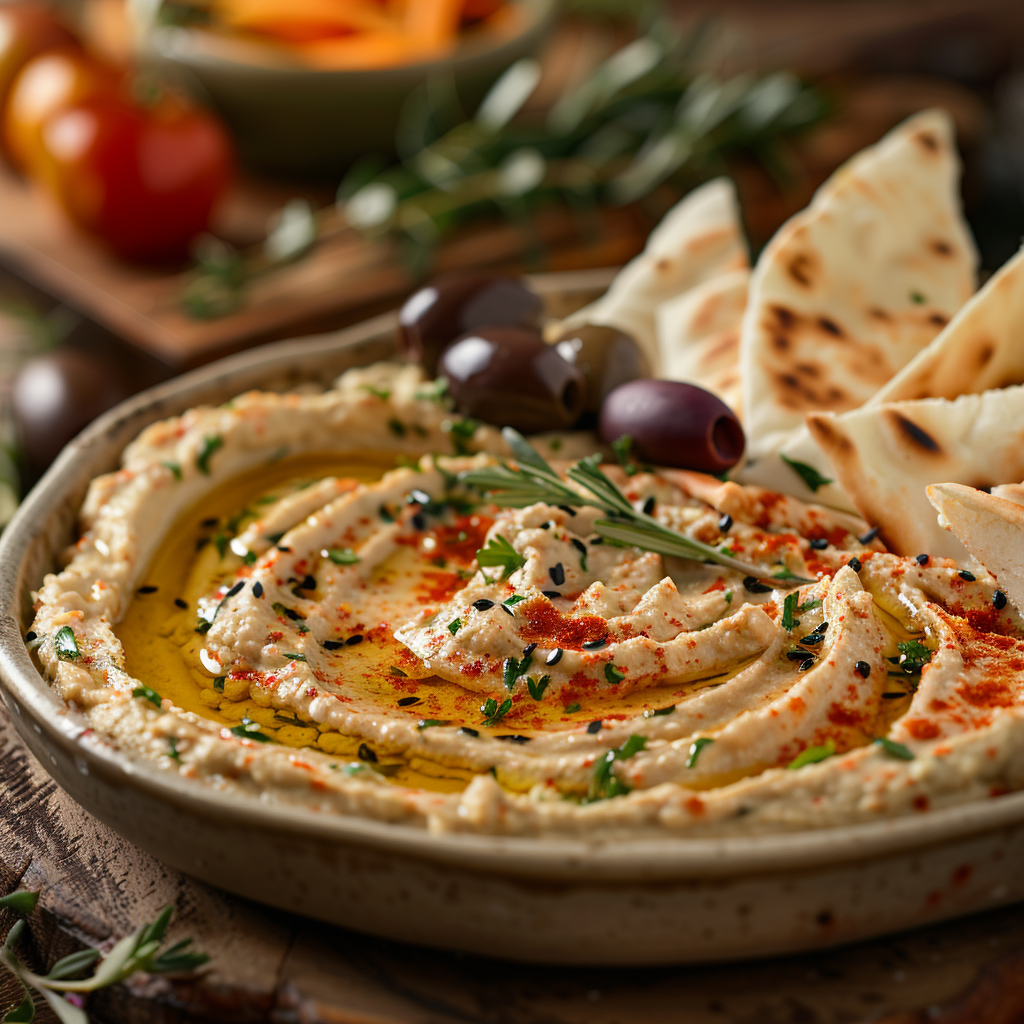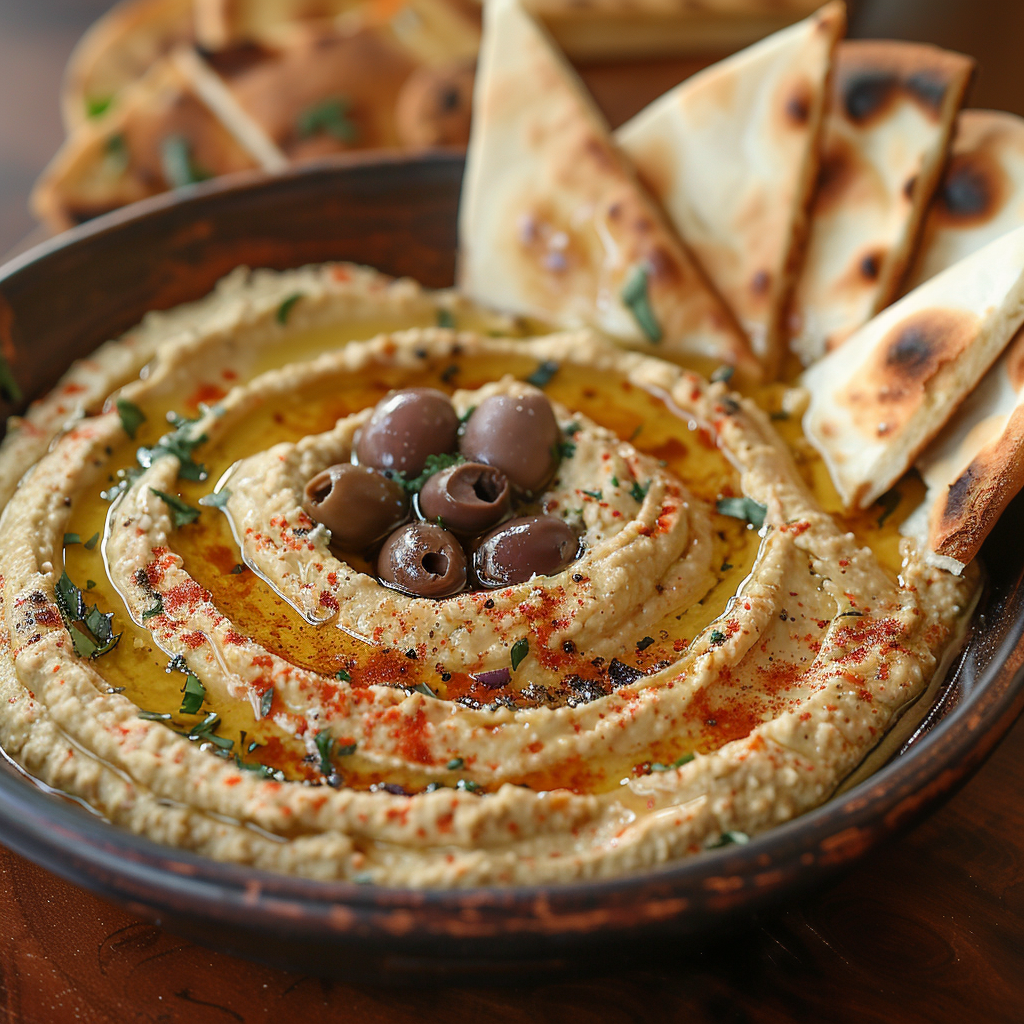
Why Homemade Hummus is a Game-Changer
There’s something magical about whipping up a batch of Homemade Hummus in your own kitchen. I remember the first time I made it—my blender sounded like it was throwing a tantrum, but the creamy, dreamy result made it all worth it. Whether you’re a hummus newbie or a die-hard fan, this recipe will make you fall in love with the Middle Eastern classic all over again. What makes this version so special? It’s simple, healthy, and packed with flavor that store-bought versions just can’t touch.
A Little History: From Ancient Roots to Modern Tables
Hummus has been around for centuries, dating back to ancient Egypt and the Levant region. Some say it originated in Lebanon, while others swear by its Israeli roots. Regardless of its birthplace, hummus has become a global superstar. I once had Lebanese friends over who insisted their grandma’s authentic hummus recipe was unbeatable. After trying my homemade version, they gave me a nod of approval—and that’s a win I’ll never forget!
Why You’ll Love This Recipe
This Homemade Hummus recipe is a winner because it’s easy to make and uses pantry staples. It’s also incredibly versatile—you can tweak it to suit your taste buds. Want it vegan? Done. Prefer it without tahini? No problem. Plus, it’s a crowd-pleaser. Whether you’re serving it at a party or sneaking spoonfuls straight from the bowl, this hummus will leave you smiling.
Perfect Occasions to Serve This Hummus
From casual family dinners to fancy dinner parties, this dish fits everywhere. It’s perfect as an appetizer with pita chips or veggies, a spread for sandwiches, or even a snack for movie night. Once, I brought a tub of homemade garlic hummus to a potluck, and people were literally licking their plates clean. True story!
Ingredients for Your Creamy Hummus
- 1 can (15 oz) chickpeas (garbanzo beans), drained and rinsed
- 1/4 cup fresh lemon juice (about 1 large lemon)
- 1/4 cup tahini (or substitute with homemade tahini)
- 1 small garlic clove, minced
- 2 tablespoons extra-virgin olive oil, plus more for serving
- 1/2 teaspoon ground cumin
- Salt to taste
- 2 to 3 tablespoons water
- Dash of ground paprika, for serving

Substitution Options
- Tahini-free option: Use almond butter or sunflower seed butter for a homemade hummus without tahini.
- Garlic-free: Swap garlic with roasted red peppers for a sweeter twist.
- Oil-free: Skip the olive oil and use aquafaba (the liquid from canned chickpeas).
Preparation Steps
Step 1: Prep Your Ingredients
Start by draining and rinsing your chickpeas. Pro tip: Peeling the skins off the chickpeas might sound tedious, but it makes your hummus silky smooth. Trust me, your taste buds will thank you. Mince that garlic clove finely—it’s the secret to evenly distributed flavor. Squeeze your lemon fresh; bottled juice just doesn’t have the same zing.
Step 2: Blend the Tahini and Lemon Juice
In a food processor, combine the tahini and lemon juice. Blend for about a minute, then let it rest for 10 minutes. This resting period helps the mixture thicken slightly, giving your hummus a creamier texture. If you’re making a healthy hummus recipe, consider using less tahini or swapping it out entirely.
Step 3: Add Garlic, Olive Oil, and Spices
Now toss in the garlic, olive oil, cumin, and a pinch of salt. Blend again until smooth. The aroma of cumin mingling with the freshness of lemon is enough to make your kitchen smell like a Mediterranean café. Don’t rush this step—let the processor work its magic.
Step 4: Incorporate the Chickpeas
Open the lid and add half of the chickpeas. Blend for a minute, then scrape down the sides. Add the remaining chickpeas and blend until smooth. If the mixture feels too thick, drizzle in water, one tablespoon at a time. The goal is a velvety consistency that spreads like a dream.
Step 5: Taste and Adjust
Before you serve, give it a taste. Does it need more salt? A splash of lemon? This is your moment to shine as a flavor wizard. Once satisfied, transfer the hummus to a serving bowl and sprinkle with paprika. Drizzle olive oil on top for that Instagram-worthy finish.
Chef’s Tip
For an extra-smooth texture, try roasting the garlic before adding it. This mellows out its sharpness and adds a subtle sweetness to your hummus.
Timing
- Prep Time: 10 minutes
- Cooking Time: 0 minutes (it’s raw!)
- Total Time: 15 minutes
Chef’s Secret
If you want to replicate Jamie Oliver’s famous hummus recipe Jamie Oliver, toast your cumin seeds lightly before grinding them. It adds depth and warmth to the dish.
Extra Info
Did you know that “hummus” means “chickpea” in Arabic? That’s why no matter how you tweak the recipe, chickpeas remain the star ingredient.
Necessary Equipment
- Food processor or high-speed blender
- Measuring cups and spoons
- Sharp knife for mincing garlic
- Serving bowl
Storage Tips
Store your hummus in an airtight container in the fridge. It stays fresh for up to a week. Always give it a good stir before serving, as the ingredients may separate over time.
For longer storage, freeze portions in small containers. Thaw overnight in the fridge when you’re ready to enjoy again. Just remember, frozen hummus might lose a bit of its original texture.
To keep it tasting fresh, press plastic wrap directly onto the surface of the hummus before sealing the container. This prevents oxidation and keeps it vibrant.
Tips and Advice
Always use freshly squeezed lemon juice—it makes a world of difference. If you’re aiming for a vegan version, double-check that your tahini is plant-based. For a richer flavor, roast your chickpeas lightly before blending.

Presentation Tips
- Serve in a shallow bowl with a well in the center for olive oil pooling.
- Garnish with chopped parsley or toasted pine nuts for color contrast.
- Pairs beautifully with colorful veggie sticks or warm pita bread.
Healthier Alternative Recipes
Here are six variations to keep things exciting:
- Roasted Red Pepper Hummus: Add roasted red peppers for sweetness.
- Avocado Hummus: Blend in ripe avocado for creaminess.
- Beetroot Hummus: Toss in cooked beetroot for a vibrant pink hue.
- Spicy Hummus: Stir in chili flakes or harissa paste.
- Herbed Hummus: Mix in fresh herbs like cilantro or dill.
- Black Bean Hummus: Swap chickpeas for black beans for a Southwestern twist.
Common Mistakes to Avoid
Mistake 1: Skipping the Skins
Peeling chickpeas takes effort, but skipping this step results in grainy hummus. Take the extra five minutes—it’s worth it!
Mistake 2: Using Old Spices
Old spices lack flavor. Always check the expiration date on your cumin and paprika. Freshness matters.
Mistake 3: Overdoing the Garlic
Too much garlic can overpower the dish. Start small and adjust to taste.
Mistake 4: Not Adding Enough Liquid
A dry hummus is sad hummus. Add water gradually until you reach the perfect consistency.
FAQ
What are the basic hummus ingredients?
The core ingredients are chickpeas, tahini, lemon juice, garlic, olive oil, and spices like cumin. These create the classic hummus flavor everyone loves.
Can I make hummus without tahini?
Absolutely! Try nut butters or simply omit tahini for a simpler version. Your homemade hummus without tahini will still be delicious.
How do I make my hummus creamier?
Peel the chickpeas, blend thoroughly, and add aquafaba or water gradually for a smoother texture.
Is hummus healthy?
Yes! It’s rich in protein, fiber, and healthy fats, making it a nutritious snack or meal addition.
What’s the best way to serve hummus?
Serve it with pita bread, crackers, or fresh veggies. It’s also great as a sandwich spread.
Can I freeze hummus?
Yes, but expect slight changes in texture. Thaw in the fridge and stir well before serving.
How long does hummus last?
Stored properly, it lasts up to a week in the fridge.
What makes Lebanese hummus different?
Lebanese hummus often includes more lemon juice and garlic, giving it a tangier profile.
Can I make hummus spicy?
Of course! Add chili flakes, hot sauce, or roasted jalapeños for heat.
Why is my hummus too thick?
Add more liquid, such as water or olive oil, during blending to achieve the desired consistency.
Closing Thoughts
With this guide, you’re ready to master the art of Homemade Hummus. Whether you stick to tradition or experiment with flavors, this dish promises to delight. So grab your food processor and start blending—your taste buds deserve it!


Homemade Hummus
Ingredients
Equipment
Method
- Drain and rinse chickpeas. Optionally, peel skins off for a smoother texture.
- Mince the garlic clove finely.
- In a food processor, blend tahini and lemon juice for about a minute, then let it rest for 10 minutes.
- Add garlic, olive oil, cumin, and a pinch of salt to the tahini and lemon juice mixture, then blend until smooth.
- Incorporate half of the chickpeas, blend for a minute, scrape down sides, then add the remaining chickpeas and blend until smooth. Add water if too thick.
- Taste and adjust seasoning as needed, then transfer to a serving bowl and sprinkle with paprika. Drizzle olive oil on top.
